Catarrhal inflammation of the Eustachian tube
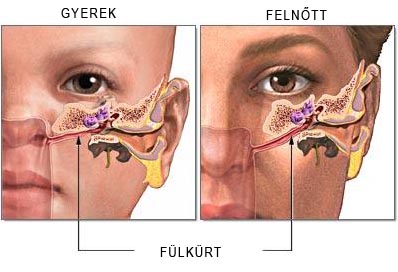
Catarrhal inflammation of the Eustachian tube is one of the most common, unpleasant and long but not very grave illnesses of the fall, winter and spring months.
The Eustachian tube connects the tympanic cavity and the nasal cavity.
Its function is to equalize pressure between the tympanic cavity and the outside. In children it connects at a smaller angle and thus opens with more difficulty than in adults.
 At change of altitude, for instance, during an airplane flight, especially at take-off and landing, we often feel unpleasant pressure and blocking in our ears.
At change of altitude, for instance, during an airplane flight, especially at take-off and landing, we often feel unpleasant pressure and blocking in our ears.
It can be relieved by tilting our head forward, since a pressing together of soft tissues in the neck thus create an advantageous situation for the opening of the Eustachian tube, or its opening can also be achieved by swallowing frequently while tilting the head forward, by chewing gum or sucking on candy.

When one has a cold (technically, rhinitis), nose drops decreasing the swelling of the nasal mucous membrane should always be used before traveling.
In case of a cold or the blocking of the nose, nose blowing should not be done too strongly, as air enters the tympanic cavity with great force in such cases, allowing the entry of bacteria and viruses into the cavity together with the discharge.
In case of upper respiratory catarrh occurring during the common cold, the mucous membrane of the nasal cavity and the pharynx as well as the opening of the Eustachian tube into the nasal cavity are affected by inflammation.
The inflamed mucous membrane swells, thereby narrowing or completely blocking the opening to the Eustachian tube, which, in turn, blocks ventilation of the tympanic cavity. This produces a sense of unpleasant tension and blockage as well as a slight loss of hearing. Due to the negative pressure, the eardrum is sucked in (i.e. the greater outer air pressure presses it inside) and the eardrum is tensed
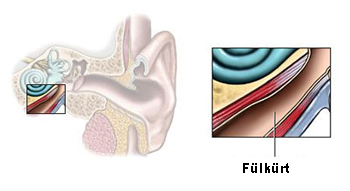 Pathogenesis
Pathogenesis
The basic cause of the disease is, then, that the Eustachian tube does not open at swallowing, which can be caused by several factors:
– The incompetence of the Eustachian tube opening muscle (m. tensor veli palatini in Latin).
– A swelling of the mucous membrane of the Eustachian tube, which can develop as a result of allergy or inflammation spreading from a neighboring area (e.g. during chronic maxillary sinusitis, or the inflammation of pharyngeal tonsils).
– A swelling in the adenoids (possible in both children and adults)
– An infiltration of malignant tumor of the nasopharynx into the Eustachian tube opening
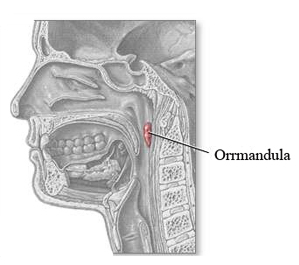
As a result of any of the above, the ventilation of the middle ear is blocked, air in it is absorbed, and cavity system develops negative pressure.
The condition often accompanies the (usually viral) catarrh of the upper respiratory system. In simple cases it is only the mucous membrane of the area of the opening of the Eustachian tube into the nasopharynx that swells and blocks ventilation.
The proper functioning of the Eustachian tube may be caused by, among other things, the acidification of the body. During detoxification processes the mucous membrane of the Eustachian tube swells and produces pathological mucus, since the body attempts to withdraw superfluous acids as well as toxins produced when binding the acids through such mucus.
The swelling and the mucus production block the ventilation of the tube.
Symptoms and treatment

Following the rhinitis, a feeling of the blocking of the ears can persist for one or two days (rarely, for up to a week).
Hearing may be temporarily impaired as well. Some patients feel as if they were speaking from a barrel.
Ears are sometimes blocked for several minutes or even hours, with the process repeating again and again. In the end the ears fail to get unblocked.
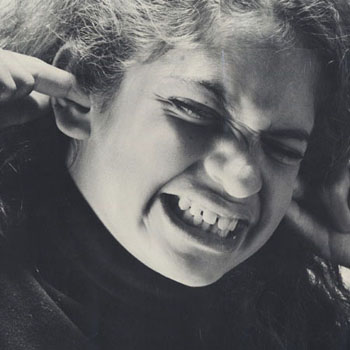
Ear ache may accompany the above symptoms as well, although, fortunately, this ache is mild and never unbearable.
In case of symptoms like this, a visit to the otolaryngologist specialist is warranted. If, for some reason, this is not possible, nose drops or nose spray should be applied to reduce the swelling of the mucous membrane of the nose.
Drafts should be avoided, and ears should be plugged up loosely with cotton balls to insulate them from changes of the outside temperature.
The catarrh of the Eustachian tube is an unpleasant, often long lasting and persistent but not severe illness that follows rhinitis and other upper respiratory illnesses. Recovery can take from a few days up to two weeks. It should be taken seriously, since it can have serious complications such as a middle ear infection.
In case of pharyngitis, drinking inflammation reducing teas is recommended, since these alleviate symptoms as well as rehydrate the body dehydrated from the fever. In case of rhinitis, those susceptible for the illness should apply nose drops even before the onset of its symptoms.
Complications

As a result of the negative pressure in the tympanic cavity, the liquid components of the blood, including the translucent serum albumin may seep over into the tympanic cavity from the blood vessels or the mucous membrane.
Through the microscope the level of the fluid and the bubble stuck in the tympanic cavity are clearly visible. This condition provides the starting point for acute and chronic serosal otitis (or middle ear infection).
If the process continues, the mucus producing goblet cells multiply in the mucous membrane of the tympanic cavity, developing the condition known as chronic mucous otitis. In the case of both serosal and mucous otitis, bacterial or viral superinfection may occur, as a result of which inflammatory formative elements of the blood, i.e. white blood cells discharge from the blood, thereby causing acute purulent otitis. The discharge, which is pus full of bacteria and viruses, applies pressure on the eardrum, producing ear ache and pulsing.
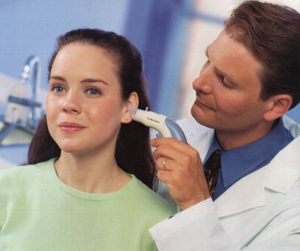 Diagnosis
Diagnosis
Most frequently it occurs together with upper respiratory catarrh, the symptoms of which can be detected well.
Microscope image: the eardrum is retracted and inert when moved with a pneumatic tube. The cone of light is widened or misshaped, the handle of the malleus looks shortened, the transfer porcess more prominent. The eardrum achieves a look of radiating vascularity.
The history is typical. Microscopic examination of the ear is essential. Conductive hearing impairment can be detected and measured in an audiology examination. A tympanometric examination can detect negative pressure in the middle ear.
Differential diagnosis
It can be differentiated from serosal otitis as well as from conductive hearing impairment developing with the eardrum intact and a closed tympanic cavity.
.
 Prevention
Prevention
A dysfunction in the ventilation of the middle ear can be caused by the acidification of the body.
During detoxification processes the mucous membrane of the maxillary sinuses, the Eustachian tube and the middle ear swells and produces pathological mucus, since the body attempts to withdraw superfluous acids as well as toxins produced when binding the acids through such mucus.
An acidified body has to be deacidified by instituting a change in eating habits and diet, and by using natural alkaline food supplements.
We recommend supplements which use natural substances to compensate for lost alkalines and to bind superfluous acids.
The product recommended by us contains a unique mixture of 49 different organically grown vegetables, grasses, leaves and sprouted grains. It contains more than 125 natural vitamins, minerals and amino acid, which makes the maximal absorption of bases possible. It has an energizing effect and helps the oxygen intake of blood from water. It is a strong oxygen catalyst and helps the optimal functioning of body cells. It alkalinizes the body and reduces acid levels.
The powder recommended by us has to be taken during the day dissolved in water. This product can significantly reduce acid level, detoxify and energize in a matter of a few weeks.
The tasks of the family practitioner
The illness can be treated by the family practitioner in parallel with the upper respiratory inflammation. The patient requires referral to a specialist in case of persisting symptoms.
Important notice: In adults, especially in the elderly, semilateral conductive hearing impairment and symptoms characteristic of the catarrh of the Eustachian tube may be indicative of tumor of the nasopharynx, in which case the patient requires referral to a specialist.
Hits: 105271




